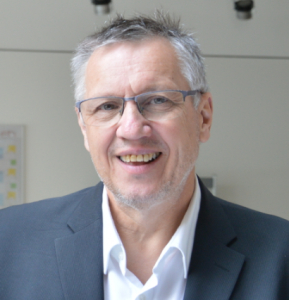Motivation systems used in health and leisure contexts rely mainly on screen-based virtual trainers and peers connected via social networks as main motivators. In working contexts, information and gamification concepts are more and more used to increase motivation. The main goal in both areas is to achieve a certain level of compliance or adherence to rehabilitation, training or production plans. For such strategies there is a variety of commercial products and solutions. However, practice shows that it is often problematic to achieve a long-term effect with these existing approaches.
RobPerMot will analyse potential opportunities and challenges that an additional inclusion of physical (robotic) embodiment and the associated presence / proximity would bring in terms of persuasion and motivation. Together with the use case partner, the project will analyze embodiment and presence settings for successful persuasive training / coaching / assistance strategies in each use case in order to extract related persuasion cues. Based on that the project will lay out how a potential robotic implementation of such cues (and strategies) could look like. Furthermore, the combination of these presence and physical / bodily touch modalities with existing persuasion strategies that utilize audio and visual modalities only will be outlined. Finally, an analysis of challenges related to the implementation of such a robotic persuader will be analyzed and a future research agenda will be drafted.
In addition to these persuasion-related questions, the project will also analyse socio-economic issues with regard to a cost-benefit analysis and an assessment of potential business models by involving external stakeholders (insurance companies, rehabilitation facilities, etc.).
- Societal goals: lower costs for social insurance, more people in mass sports increases social health. Improved training methods and more sustainable rehabilitation increases the health status of chronically ill people.
- Economic goals: motivated personnel leads to a lower number of mistakes, higher vigilance for technical problems of manufacturing systems, better compliance with ergonomically correct movement sequences, which leads to fewer illness-related problems. In the rehabilitation context better adherence to post-rehabilitation exercise plan will lead to a lower post-rehabilitation complication rate which creates lower costs for the social insurance system and lowers the amount of sick leaves. This, in turn enhances productivity of the work force.
Start: 01/2021
Duration: 12 Monate
Funding Organisation: FFG Österreichische Forschungsförderungsgesellschaft
Funding Frame: IKT der Zukunft, IKT der Zukunft, IKT der Zukunft –
- Ausschreibung (2019)
Funding contract number: 880841

Your Contact
DI Christian Wögerer, MAS MSc
International Networks
+43 72 52 885 200
christian.woegerer@nullprofactor.at
We answer…
Projectcoordination:
AIT Austrian Institute of Technology GmbH, Center for Technology Experience
Projectpartner:

